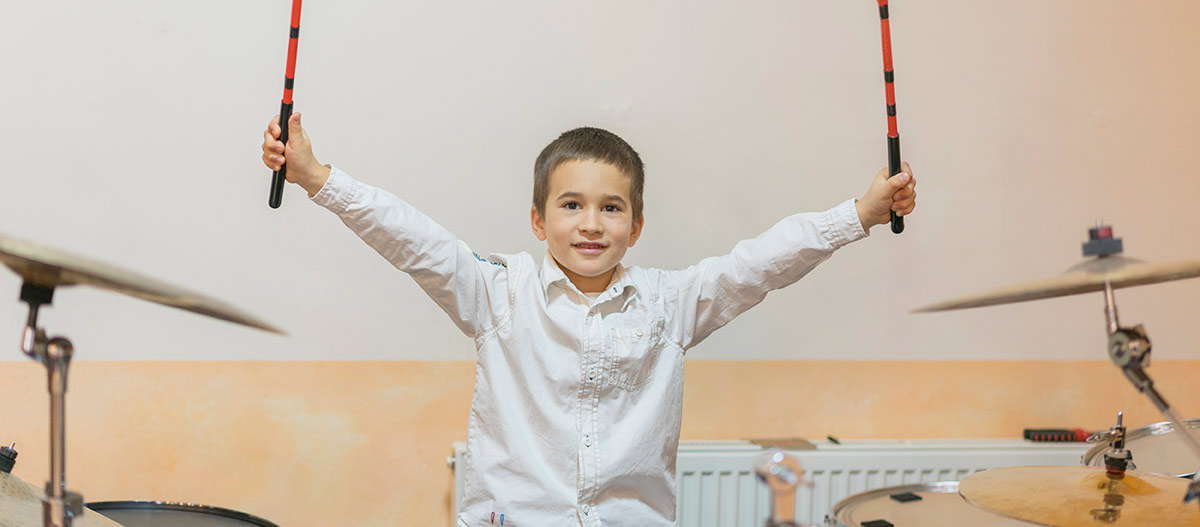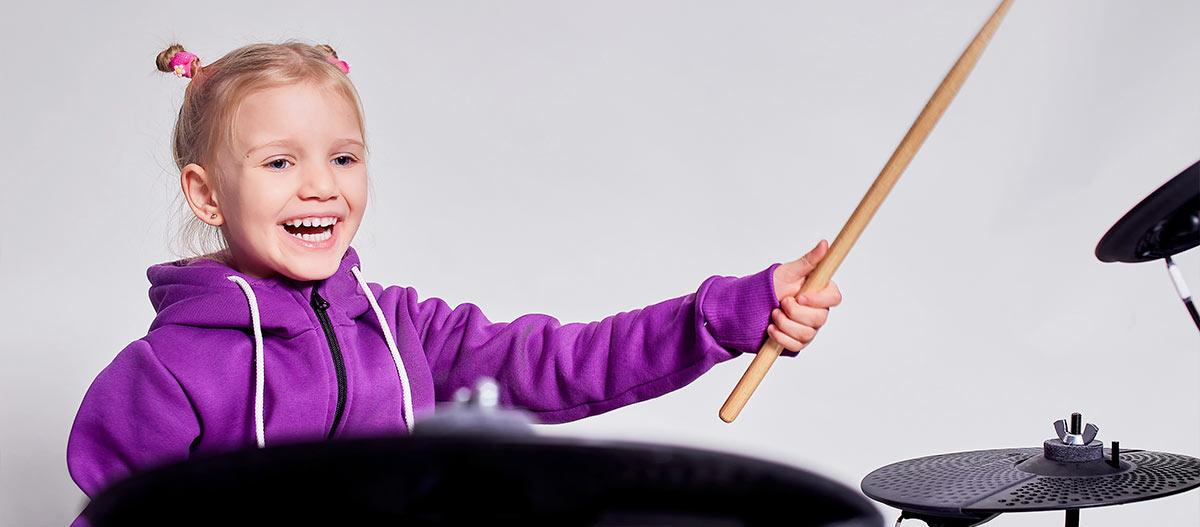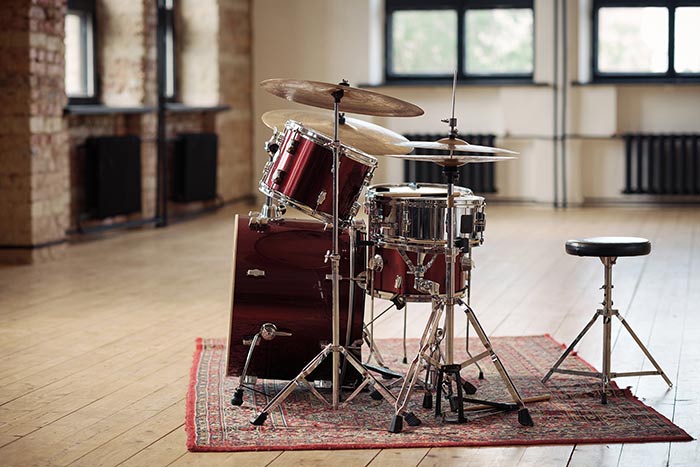Drums have been around for thousands of years and are one of the most exciting and energetic instruments a child can learn.
With their powerful rhythms and dynamic beats, drums captivate children like few other instruments can.
Whether it’s the pulse of a rock band or the heartbeat of a marching parade, drums play a central role in nearly every musical genre.
For kids, drumming isn’t just about making noise—it’s about building rhythm, focus, and confidence in a fun, engaging way.

Why Drums Are Great for Kids
Drums offer a unique blend of movement, rhythm, and creativity that make them ideal for young learners.
Here’s why they’re a fantastic choice:
- Boosts Coordination: Drumming strengthens motor skills and hand-eye coordination.
- Improves Focus & Discipline: Kids learn patience and perseverance through rhythm and repetition.
- Encourages Emotional Expression: It gives children a creative outlet to release energy and express themselves.
- Supports Learning: Studies link music training with better math, memory, and listening skills.

What Age Can a Child Start Learning Drums?
Most kids can start basic drum lessons around ages 5 to 6, especially if they show interest in rhythm.
At this stage, lessons are light, fun, and interactive.
By age 7 or 8, many children are ready to learn techniques, read simple rhythms, and play basic patterns on a real drum kit.

How to Get Started: A Step-by-Step Guide
1. Spark Their Interest
Introduce them to different styles of drumming—watch performances online or give them a toy drum to explore.
See if they naturally keep rhythm or show excitement when listening to music.
2. Choose the Right Equipment
You don’t need a full drum set right away. Start small:
- Practise pads: Great for learning stick control quietly.
- Junior drum kits: Designed for smaller hands and bodies.
- Electronic kits: Volume control makes these ideal for home use.
3. Find a Qualified Instructor
Look for drum teachers who have experience working with children.
A good teacher knows how to keep lessons engaging, positive, and tailored to your child’s learning style.
4. Encourage Practise (But Keep It Fun!)
Kids benefit most from short, regular practise sessions—about 15–20 minutes a few times a week.
Make practise playful, not stressful, and celebrate their progress.

Common Questions from Parents
“What if my child loses interest?”
That’s totally normal! Try switching up music styles or letting them explore different percussion instruments. The key is to keep music enjoyable.
“Isn’t drumming too loud?”
With practise pads or electronic kits, volume is no longer a problem. You can also soundproof practise areas at home if needed.
“Does my child need natural talent?”
Not at all. Musical skills develop through practise and encouragement. Enthusiasm and curiosity are more important than innate talent.

Conclusion
Introducing your child to the world of drumming can open the door to creativity, discipline, and self-expression.
With the right guidance, tools, and encouragement, kids of all ages can enjoy the benefits of learning this powerful instrument.
Whether they’re tapping out rhythms on a pad or rocking out on a full kit, your child has the potential to grow musically and personally through drums.
S&C Music is proud to offer drum lessons designed to inspire and develop young musicians.
So why wait? Pick up the sticks and let the rhythm begin!




